Election 2022: Counting the cost of winning
Jim Chalmers appears fresh, but looks can be deceiving. He will soon ask Australians to make sacrifices to create opportunity for vital reforms.
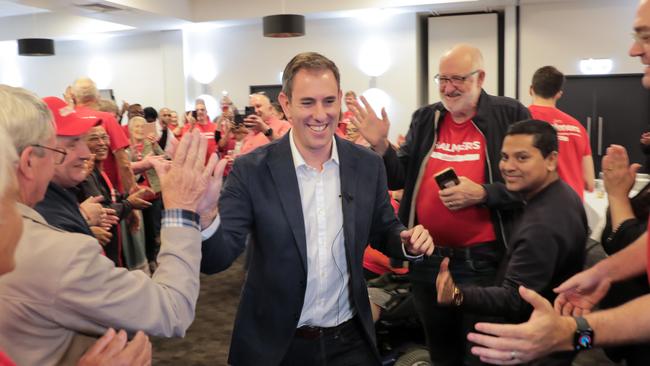
The Treasurer, 44, appears fresh, but looks can be deceiving. Now in his fourth term as an MP, he’s a veteran of hand-to-hand politics, following stints in his 20s as an adviser to Queensland and NSW Labor, as well as holding senior roles in Canberra with Kim Beazley and Wayne Swan, in and out of government.
Paul Keating was 39 in 1983 and Peter Costello was 38 in 1996 when they became treasurer. In different eras, those men sacrificed their youth in what is the second most important job in executive government. The before and after photos of long-distance treasurers are not kind; we thank you for your service.
Chalmers will need youthful energy and middle-age wisdom to steer the nation through a period where both the politics and economics are thorny from the start. Labor has the advantage of a fresh set of eyes and adrenaline.
But its handicap is it has not prepared the electorate or its own support base for dealing with all the problems we’ve accumulated over two decades and that have become worse. They must all be addressed if the Albanese government has any hope of paying for new social spending, stabilising debt and squeezing out a rise in living standards.
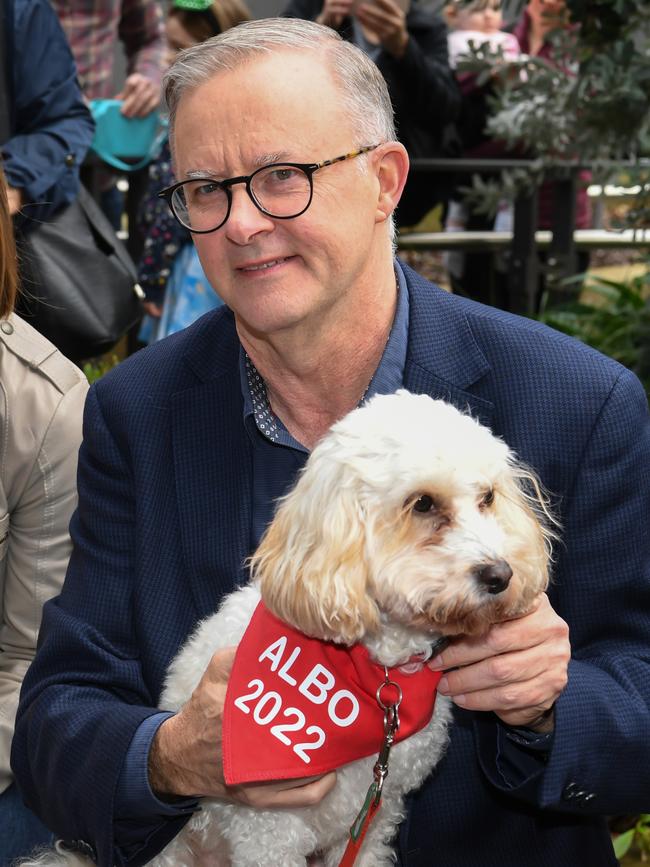
The numbers in the House of Representatives look tight and the Senate, as always, will require finessing. Anthony Albanese has had success in wrangling the crossbench, but he’ll have to use incumbency to expand his support base. Last Saturday, two-thirds of voters gave their first preference to someone else. Had Albanese secured the same primary share as Kevin Rudd in 2007 (43.4 per cent), he would have attracted another 1.8 million votes.
Sure, there are long-term declines in support for the major parties, but the Prime Minister must build new constituencies after a convulsion in the electorate. It will require more than consensus, as he has promised; governing will need a new language and less Rudd-like micro control of the executive. As one veteran of Labor campaigns put it to Inquirer on day one of the Albanese ascendancy, “maintaining strict party and political discipline is now an increasingly dangerous game”.
“A key reason behind Labor’s primary being so low now is because we are communicating on one highly disciplined, and so often banal, communications wavelength,” the source said.
“This erodes our capacity to create a more sophisticated assembly of varying constituencies sheltering under a big ALP umbrella. It also stifles thought leadership and political entrepreneurialism, both of which are crucial if a political party is to evolve, as the ALP must surely do.”
As some have said, Labor’s small-target strategy brings a small mandate, especially in addressing chronic issues: emissions abatement, workplace and taxation reform, housing affordability, federal-state relations, infrastructure pricing and provision, competition policy and budget sustainability.
“Sure, Labor’s was a small-target approach,” economist Chris Richardson tells Inquirer. “But there is some built-in wriggle room. When Jim Chalmers says he’ll be looking to improve the ‘quality’ of the budget, that is a target-rich environment. Plus Labor has promised a whole series of reviews across many policy areas. Through them the new government can build a case in the community that Australia must change.”
There’s solid rock at Labor’s base camp, but the weather is closing in for the next stage of the climb. Unemployment is 3.9 per cent and falling, which is paying social and fiscal dividends; elevated export prices are giving Australians a temporary pay rise and a revenue boost to the budget. But after the Coalition’s spending binge gross debt will rise from today’s $890bn to $1.2 trillion across the next four years.
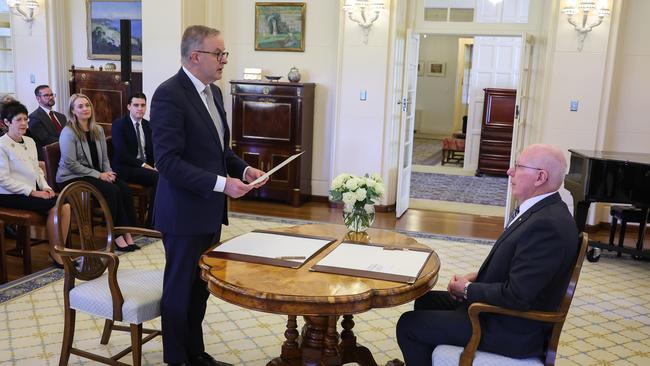
Albanese takes charge amid erratic financial markets and gushing inflation from Covid-19 shocks and Russia’s assault on Ukraine, leading to fears of a global slowdown and the terror of stagflation. Central banks are raising interest rates. The Reserve Bank lifted its cash rate from 0.1 per cent to 0.35 per cent mid-campaign, the first rise since November 2010. When the RBA board meets in just over a week it could opt for a chunky move to 0.75 per cent.
The major parties fought the election in a fiscal twilight zone, saturated with stereotypes and slurs, with not a repair plan in sight. It was a faith-based fiscal romp. By Wednesday, after several days of briefings from economic officials, Chalmers and Finance Minister Katy Gallagher adjusted their mood and manner from the weekend’s jubilation.
Chalmers did a half-turn, with frown. He would be making a ‘‘blunt, frank and upfront’’ economic statement next month or in July. And surprise, surprise, it wasn’t possible to do ‘‘everything that we would like to do’’.
‘‘We have to prioritise, we have to sequence, we have to weigh up our priorities and work out what we can responsibly do and when we can do it,” Chalmers said, warming to the straight talk we expect from treasurers released from the La La Land of campaigning. ‘‘And that inevitably means that some things that we would like to do will take a bit longer for us to find room for a budget change.’’
Much of this is performative, the new custodian’s monologue in the reset melodrama of every new government.
It was also a ploy to kick the vanquished, chill the excitement of the crossbench and wind back the tendencies of a conga line of spending ministers soon coming through the door of the expenditure review committee.
There was a time when oppositions came to office and declared the accounts were much worse than the government had presented. In 1996 the Coalition discovered a budget “black hole”, with John Howard dividing his flock of promises into “core and “non-core” pens. Thanks to Costello’s charter of budget honesty, perhaps his greatest legacy alongside central bank independence, there is fiscal transparency during the campaign, and hopefully after it.
That’s not to say there wasn’t a degree of bill shock when Chalmers met officials to begin going through Labor’s incoming brief known as the “red book”, which outlines how its promises fit with the other capital dynamics at play. It’s not as if Chalmers does not have information channels, but oppositions have only partial visibility to such matters and nowhere near the resources to prepare for government.
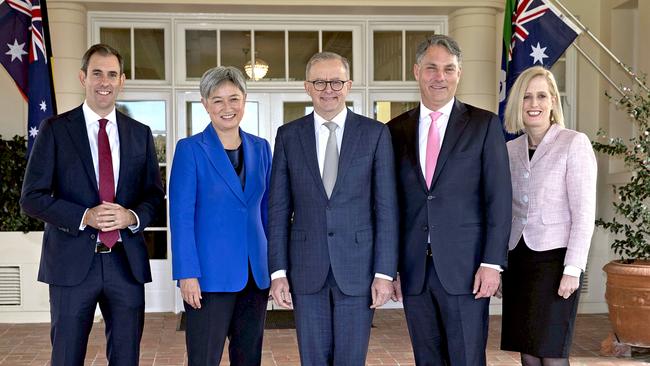
Yet there will have been a bracing reality to how the cost of programs such as aged care, health, disability services and defence will rise over time. Once savings are taken into account, Labor’s promises on aged care, childcare, education, skills and clean energy will add $7.4bn across four years from the baseline the bureaucracy presented in the pre-election economic and fiscal outlook 10 days into the campaign.
What would be the medium and long-term fiscal effect of changing the existing productivity assumptions? It could not have been easy listening and Chalmers told this newspaper on Thursday he would include a “more realistic” picture of Australia’s productivity challenge in his first budget in October, which will have a fresh fiscal repair strategy.
Chalmers says he now wants to engage the Australian public in a “big conversation about our national economic challenges” and that “sometimes sacrifices are necessary if we are to make progress”. He argues the savings identified pre-election were a ‘‘very good start when it comes to trying to improve the quality of the budget’’ and ‘‘we hope to be able to improve the budget further’’ as Labor conducts an audit.
Labor promised better days, implicitly and explicitly, in nailing its critique at the door of the three-term Abbott-Turnbull-Morrison government. “The price of everything is going up but your wages are going down,” was the charge. Albanese, wisely, did not repeat Bill Shorten’s overreach and undersell, and offered a less-shiny product and, seemingly, the expectations to match.
Yet there’s an important caveat from the campaign. In a cost-of-living shootout, Labor promised it had a plan for cheaper electricity, childcare, mortgages, medicines and Medicare, and electric vehicles. And “better pay”, as if governments had that power. Chalmers is now dampening expectations, conceding “it will take some time for us to turn around these big challenges”.
When parliament returns, Chalmers will present an economic update. A jobs summit is planned to get employers, unions and government working on how to address skill shortages. There will be a host of reviews, from infrastructure to the National Disability Insurance Scheme, to fashion new approaches. Plainly, Labor can’t backslide on climate policy but neither can it become adventurous in teal or Greens territory; they’re locked into a 43 per cent reduction target by 2030.
But there is wriggle room for how to get the budget in better shape and implement reforms, or at least prepare the ground for them in a second term. The Productivity Commission’s five-yearly review is due in February next year.
You can bet Kennedy reinforced a few home truths to the new economics team.
In October 2020, Kennedy told the Senate the pandemic’s migration pause, and the subsequent smaller and older population, “may require governments to reconsider how taxation is raised to support essential services”. A year ago, the last time the Treasury secretary made a non-parliamentary address, he said public finances must be managed in a way “that puts the highest priority on maximising the long-term performance of the economy”. We’ve undertaken bigger budget repair challenges in the past.
“The key to doing so was a strong economy, restrained government spending and supportive economic reforms,” Kennedy told the Australian Business Economists group last May. “It is worth noting that even when deficits are being used to support economic growth, the quality of decision making is crucial. The cost of wasted spending is no less in a deficit than it is when a surplus is present.”
Canberra’s economic brains trust believes we can, and must, do much better. There’s an “opportunity cost” for every taxpayer dollar, hence priorities need to be set. Productivity Commission chairman Michael Brennan, too, has kept a low profile but last June he warned against “fiscal complacency”, detecting an “overly sanguine view” about ever-expanding debt and deficit.
“Effectively that government can and should go yet further with fiscal expansion in more normal economic times at no effective cost,” Brennan told the Committee for Economic Development of Australia. He said budget repair was hard in practice because spending proposals tended to look attractive individually, but they added up to an unattractive and unaffordable total.
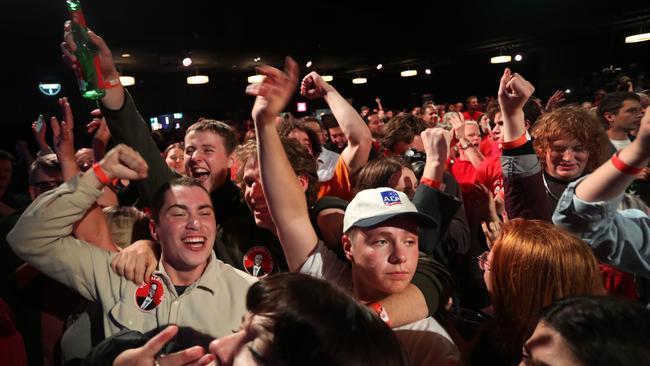
So, Labor has a chance to ditch some of the Coalition’s accumulated junk policy. The government can reorient spending to get better outcomes, especially in human services, seen as the next wave of productivity reform. For instance, in health, more spending on prevention, where we’ve underspent, and less on cures, where we’ve overspent.
Brennan argues rigidities in health funding and regulatory settings make it hard for new, cost-saving models of care to get established and grow. “Should health be forever exempt from the sorts of real cost reductions that have occurred in other sectors – largely through technological advance?” Brennan has said.
The NDIS, likely to cost $60bn a year by the end of the decade, is ripe for pruning, before it gets away from its original design principles. Can Shorten, the minister who instituted it, strip out extra costs such as lawn mowing and other services that have nothing to do with workforce readiness or improving health? Labor’s ambitions “to restore quality and humanity to aged care” won’t come cheap. We don’t know what a significant pay rise for workers in the sector will cost or how it will be shared.
The previous government had little stomach for a productivity agenda. Josh Frydenberg was timid, while Morrison described the push for supply-side reform as a “vanity” exercise or “retro” project. What they were rejecting were higher living standards; the suburban bus that wiped them out last Saturday was wage stagnation, which metastasised as a stage four cost-of-living malady.
Last week former competition chief Rod Sims noted the lack of innovation and productivity, and hence lower wages and inequality, could be sheeted home to high industry concentration. Better competition policy would improve the incentives to invest and create new products.
Addressing competition and a dozen other issues could be an agenda for a political warrior’s second term, the sort of toil that demands the “fire in the belly” and “gas in the tank” the previous treasurer bowed out with. There are few second chances in politics. The clock also is ticking for Chalmers.
“Part of the upfront national conversation I want to have with the Australian people is about how we shift the needle on productivity – that’s the secret to get wages growth and economic growth with low inflation,” Chalmers told economics correspondent Patrick Commins.
The next election may seem ludicrously far away, yet given our short cycles for action it’s no time at all. An open contest on national repair and reform, no matter how belated, would be more nourishing than the one we just endured. There’s a rugged peak to climb, and success depends on political oxygen and the courage to stay on track.


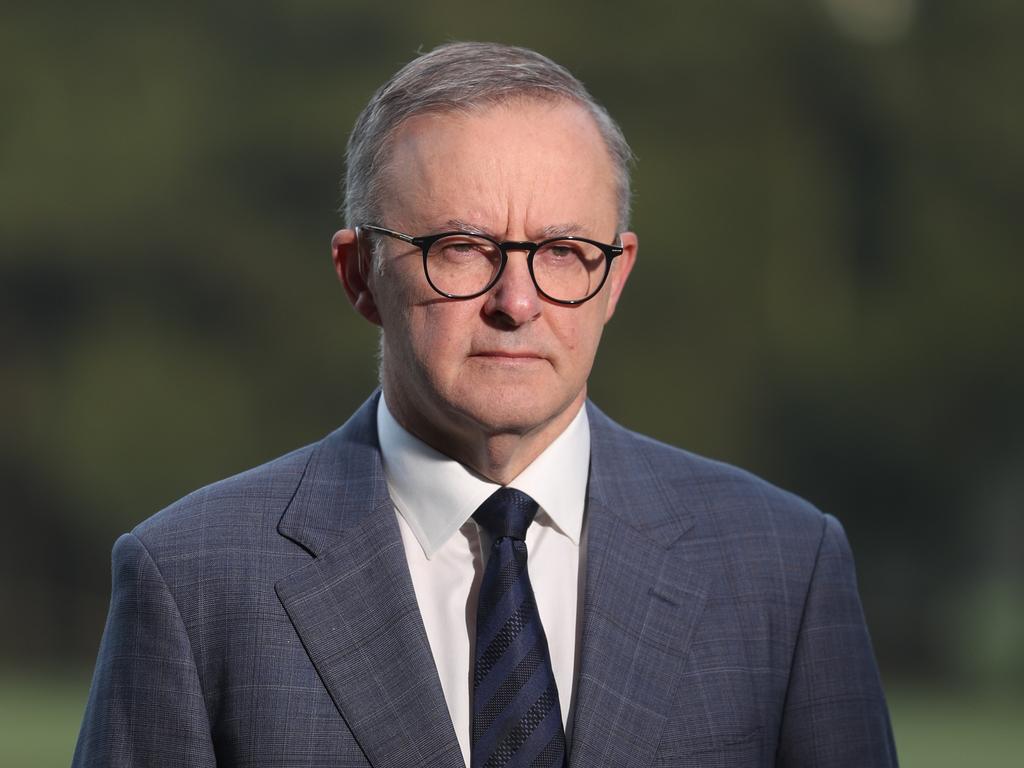


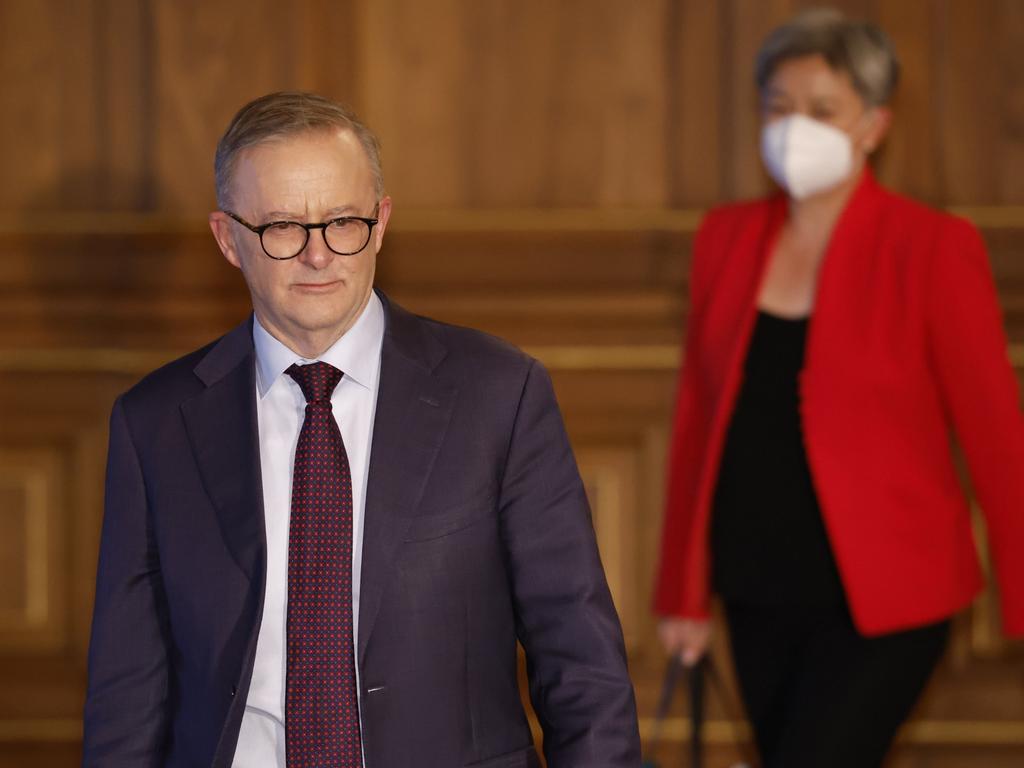


Jim Chalmers exuded a winner’s glow on Sunday as he chatted at his kitchen table in Brisbane’s Logan with Treasury secretary Steven Kennedy.